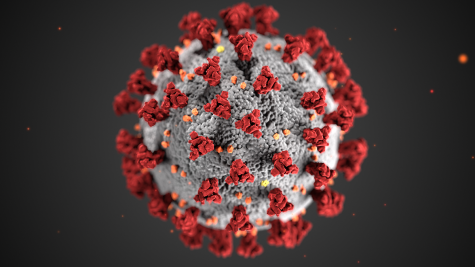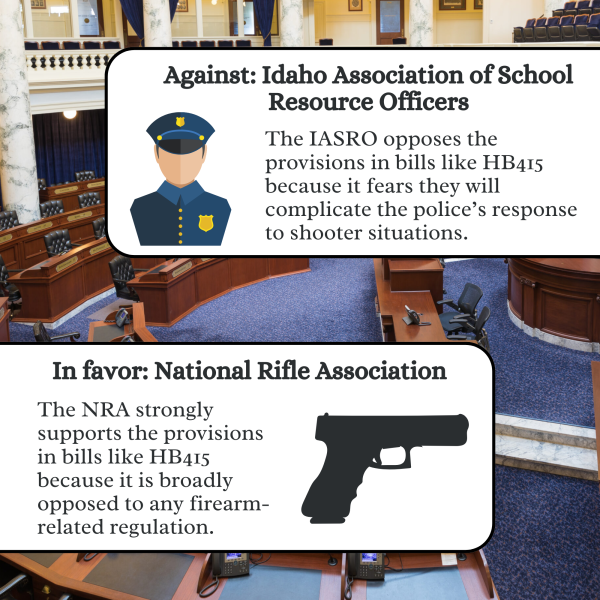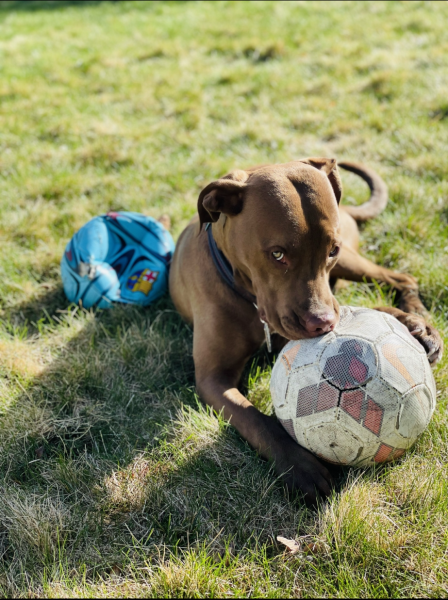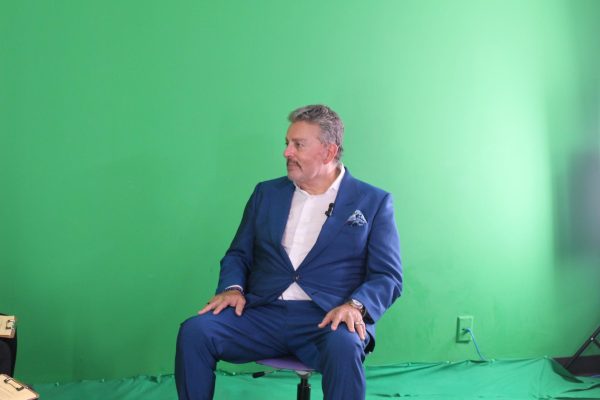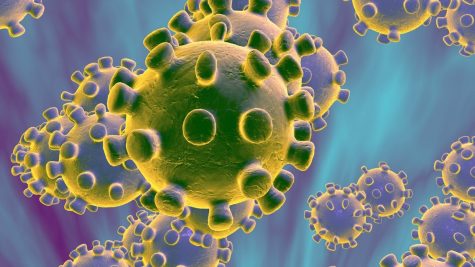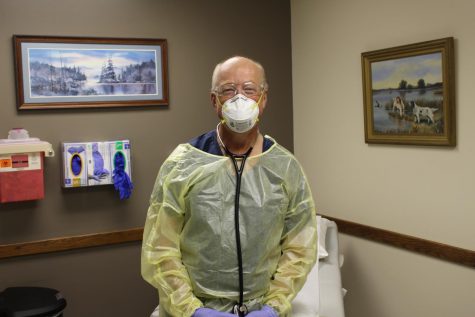Donaldson answers students’ Covid questions

This fall, while attending school in the Covid 19 pandemic, students of Introduction to Journalism at LHS came up with a series of questions for their superintendent. Dr. Robert Donaldson met with The Bengal’s Purr to address those questions Nov. 11 at LHS. The following is an excerpt from that meeting.
PURR: Thanks for meeting with us. First, is it OK to share the numbers that you send out in your emailed Covid case reports?
DONALDSON: Since they’re going to all parents and staff, there’s no problem with it at all. We send that communication out to parents district-wide no matter what grade level, and they receive that daily. These last few days [case numbers] have been low, like two yesterday, one today, which is a good trend. We would like to be as transparent as possible right from the get go.
PURR: Do schools actively do contact tracing? Where do the report numbers come from, and when did you start the reports?
DONALDSON: Those numbers come back through a number of sources. One would be public health, being in contact with us. Public health is really who does the contact tracing. They also come from parents who indicate to us that a son or daughter has tested positive. Those numbers reflect positive tests, not necessarily quarantined [people]. I also review attendance and overlay that as well. Our [absence numbers are] a little high but not more than usual, not off the charts.
PURR: Why are those who have been exposed not being informed?
DONALDSON: It’s because of HIPPA laws. The health privacy act does not allow for [sharing] that. When I began looking at communication that would go out early on in the shcool year, I was looking at a notification that would go to parents district-wide, to staff district-wide. If there was an incident in a classroom, I [wanted to] notifiy all those students’ parents. That was nipped in the bud quickly. I always use legal counsel if there’s any question. But public health, through contact tracing, can reach out [to people who are exposed] and that’s allowable.
PURR: Why are schools not taking more safety precautions, such as daily temperature checks?
DONALDSON: There’s two considerations with temperature checks. The one that really drives our decision on that is that the CDC does not recommend routine symptom checks, including temperature [checks]. The other part of it is the logistics. Can you imagine if we had even 10 devices to get 1,480 students in this school in the morning?
That being said, we do have more tempereature devices in all the schools than we’ve ever had. So if a student comes to the office – let’s say in an elementary — [they] say they feel bad, they feel hot. We would always do the temperature [check]. It would be the same for the high school. … I probably purchased about 60 devices so we have a sufficient number at all the builidngs.
We never had a [central] place for a district nurse [before opening the new LHS campus]. That position is relatively new — it’s probably been around for only the last four years. We used to contract with public health to provide nurse services. You could imagine if we were relying on that now with everything public health is doing.
PURR: How have things changed with Covid numbers in the district since masks were mandated? Have cases gone up?
DONALDSON: That’s what I’m looking at. It seems like it’s been a long time but it hasn’t. It was [Nov. 2] that I made that requirement. Looking at numbers [Nov. 11], we’ve had two days that have been low. Where we will really look for effect is two weeks out. I wanted to make sure that we did not move from green [operations level] to another level without utilizing face coverings. The other [yellow] level would then allow us to not only have face coverings but ensure greater physical distance.
PURR: What are the numbers we would need to see for the district to be shut down or to move to the red or the yellow levels?
DONALDSON: That’s a good question. There is not a number. It is a decision that I would probably initially make. I wouldn’t call a school board meeting because I’ve been empowered to make decisions like that because we need that kind of responsiveness.
I would look at a real uptick in patterns. We’d look for a real peak in the numbers of students getting sick. Let’s say that case numbers — and I’m not saying it would be 50 — but let’s say 50 to 100 students test postive in a day. That’s the kind of information where I’d reach out. I talk on almost a daily basis with public health. They’re not going to tell me what to do and that’s OK. They will give me information to reflect on.
But I found out early that they have a difficult job and the last thing they need is to decide whether or not the Lewiston School District should be shut down.
I take a lot of factors into consideration. There are three factors in this public health region. One is the number of cases. The second leg on the stool is hospitalizations. The third leg is turnaround and test time. If the test turnaround is pretty quick, that is a good thing.
PURR: At what point are we going home? How bad does it have to get?
DONALDSON: See, that’s a hard question to answer. It’s like the example I gave of a real uptick in the number of students [getting sick]. The uptick would be in the hundreds, maybe, when we start to see that kind of spread. The levels are established to [guide]the district, but I could also make a decision to move a school building [to the yellow or red level]. It would be all based on the data and discussions with public health.


